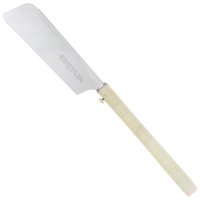By selecting the settings and clicking on "Save settings", you give us your consent for us to use the selected cookies and technologies and the associated data processing in accordance with Art. 6 (1) (1) (a) of the GDPR. When cookies and similar technologies are used, data may also be processed in countries that are not part of the European Economic Area. You can find more information in our Data Privacy Policy.
Purpose:Marker that the visitor has clicked the back button and the display tab restore must be performed.
Provider: dictum.com
Type: Local/session storage
Purpose: Display of the visitor-specific promotion codes. Marker that the modal box should remain closed.
Provider: dictum.com
Type: Local/session storage
Purpose: Provision of the conversion factors for the currency converter.
Provider: dictum.com
Type: Local/session storage
Purpose: Storage of the currently selected currency in the currency converter.
Provider: dictum.com
Type: Local/session storage
Purpose: Provision of the glossary entries.
Provider: dictum.com
Type: Local/session storage
Purpose: Marker for the display tab restore when clicking the back button.
Provider: dictum.com
Type: Local/session storage
Purpose: Marker whether a cleanup of the Local Storage has taken place.
Provider: dictum.com
Type: Local/session storage
Purpose: Marker for the display tab restore when clicking the back button.
Provider: dictum.com
Type: Local/session storage
Purpose: Unique shop-internal user ID, which is required to provide essential shop functions such as shopping cart and login.
Provider: dictum.com
Type: HTML
Expiry: Session
Purpose: Technically necessary function for page redirection in the event of page loading errors.
Provider: dictum.com
Type: Local/session storage
Purpose: Ensures visitor browsing security by preventing cross-site request forgery.
Provider: dictum.com
Type: HTML
Expiry: Session
Purpose: Storage of the visitor setting whether cookies are generally allowed.
Provider: dictum.com
Type: HTML
Expiry: 180 days
Purpose: Storage of the number of elements in the shopping cart.
Provider: dictum.com
Type: Local/session storage
Purpose: Storage of the visitor setting whether cookies are generally prohibited.
Provider: dictum.com
Type: HTML
Expiry: 180 days
Purpose: Storage of the visitor settings in the Cookie Consent Manager.
Provider: dictum.com
Type: HTML
Expiry: 180 days
Purpose: Is set when a shop page with a corresponding parameter in the URL is requested and serves to provide corresponding price information.
Provider: dictum.com
Type: HTML
Expiry: Session
Purpose: Storage of the articles contained in the user's wish list in order to display the wish list buttons as active.
Provider: dictum.com
Type: Local/session storage
Purpose: Storage of the user setting for displaying the gross or net price.
Provider: dictum.com
Type: HTML
Expiry: 365 days
Purpose: Marker whether the gross/net price selection has already been displayed.
Provider: dictum.com
Type: Local/session storage
Purpose: Storage of a hash value of the elements sent to the browser via HTTP2 push.
Provider: dictum.com
Type: HTML
Expiry: 30 days
Purpose: Storage of the visitor setting, how many articles should be displayed per listing page.
Provider: dictum.com
Type: HTML
Expiry: Session
Purpose: Marker whether the cookie permission should be hidden for a specific shop language.
Provider: dictum.com
Type: Local/session storage
Purpose: Functional test whether local/session storage entries can be written. Entry is automatically deleted immediately after creation.
Provider: dictum.com
Type: Local/session storage
Purpose: Necessary cookie for controlling the cache handling.
Provider: dictum.com
Type: HTML
Expiry: Session
Purpose: Storage of the identification number of the shop language requested by the visitor.
Provider: dictum.com
Type: HTML
Expiry: Session
Purpose: Function test for cookie settings. This cookie is automatically deleted after creation.
Provider: dictum.com
Type: HTML
Expiry: Session
Purpose: Marker for the preferred or default video resolution.
Provider: dictum.com
Type: Local/session storage
Purpose: Marker for the assignment of customer-specific prices after login.
Provider: dictum.com
Type: HTML
Expiry: Session
Purpose: Is set when a shop page is called up with a corresponding partner parameter in the URL and is used to operate the partner program.
Provider: dictum.com
Type: HTML
Expiry: Session
Purpose: Unique shop-internal user ID, which is required to provide the wish list function.
Provider: dictum.com
Type: HTML
Expiry: 360 days
_gid
Purpose: Registers a unique ID that is used to generate statistical data on how the visitor uses the website.
Provider: .dictum.com
Type: HTML
Expiry: 1 day
_ga
Purpose: Registers a unique ID that is used to generate statistical data on how the visitor uses the website.
Provider: .dictum.com
Type: HTML
Expiry: 730 days
_gat / _dc_gtm_
Purpose: Serves to limit the query rate to Google Analytics.
Provider: .dictum.com
Type: HTML
Expiry: 1 day
Ga-disable-
Purpose: Opt out of Google Analytics tracking.
Provider: dictum.com
Type: HTML
Expiry: SESSION
Purpose: Tracking of visitor clicks on shop-internal recommendation banners.
Provider: dictum.com
Type: Local/session storage
Dmc- 12
Purpose: Setting pixels to store user behaviour (viewed products, navigation in the shop; products in the shopping cart) for the purpose of retargeting.
Provider: pix. hyj.mobi
Type: HTML
Expiration: 2 years
Dmc- 12-r
Purpose:Storage of all campaign IDs of shops the user has visited.
Type: HTML
Expiration: 2 years
Purpose: Stores with which end device the user has called up the shop. This information is used for statistical purposes and for the optimised provision of shop functions.
Provider: dictum.com
Type: HTML
Expiry: Session
Purpose: Controls whether personalized advertising is displayed with GoogleAds or whether user behavior is measured or only transmitted anonymously and aggregated.
Provider: dictum.com
Type: HTML
Procedure: 180 Days

DICTUM Compact Saws, 2-piece Set, Traditional Grip
incl. VAT plus shipping costs
Article No. 714848

DICTUM Robusuta Folding Saws, 2-piece Set, Untreated Beech Handle
incl. VAT plus shipping costs
Article No. 714846

DICTUM Saws, 2-piece Set, Traditional Grip
incl. VAT plus shipping costs
Article No. 714847

DICTUM Japan-Duo Saw Set, 2-Piece Set
incl. VAT plus shipping costs
Article No. 712380
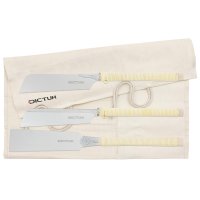
DICTUM Basic Saw Set, 3-Piece Set, Traditional Grip
incl. VAT plus shipping costs
Article No. 712833
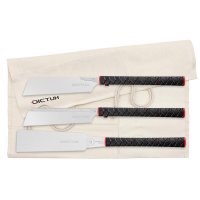
DICTUM Japanese Saws, 3-Piece Set, Power Grip
incl. VAT plus shipping costs
Article No. 712381
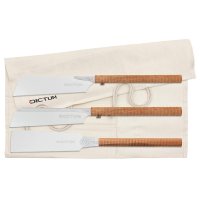
DICTUM Japanese Saws, 3-Piece Set, Wave Grip
incl. VAT plus shipping costs
Article No. 712645
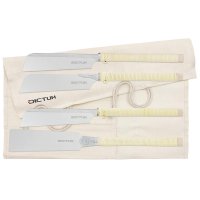
DICTUM Basic Saw Set, 4-Piece Set, Traditional Grip
incl. VAT plus shipping costs
Article No. 712383
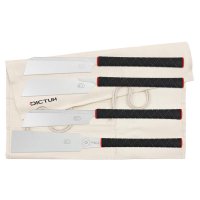
DICTUM Basic Saw Set, 4-Piece Set, Power Grip
incl. VAT plus shipping costs
Article No. 712384
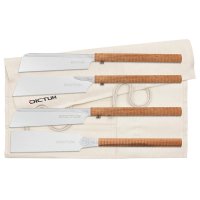
DICTUM Basic Saw Set, 4-Piece Set, Wave Grip
incl. VAT plus shipping costs
Article No. 712646

DICTUM Japanese Saw Set Duo III, 2-Piece Set
incl. VAT plus shipping costs
Article No. 712143

DICTUM Basic Saw Set III, 3-Piece Set
incl. VAT plus shipping costs
Article No. 712144

DICTUM Compact Saws, 4-Piece Set, Power Grip
incl. VAT plus shipping costs
Article No. 712863

DICTUM Compact Saws, 3-Piece Set
incl. VAT plus shipping costs
Article No. 712834

DICTUM Compact Saws, 2-Piece Set, Power Grip
incl. VAT plus shipping costs
Article No. 712641

DICTUM Saw Set in Systainer³
incl. VAT plus shipping costs
Article No. 718807

Fine Saws, 3-Piece Set
incl. VAT plus shipping costs
Article No. 712011
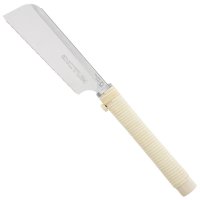
DICTUM Dozuki Compact 180, Crosscut, Traditional Grip
incl. VAT plus shipping costs
Article No. 712111
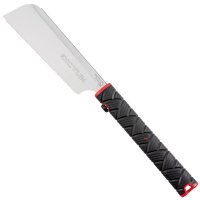
DICTUM Dozuki Compact 180, Crosscut, Power Grip
incl. VAT plus shipping costs
Article No. 712846
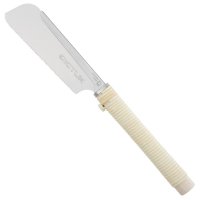
DICTUM Dozuki Super Hard Compact 180, Traditional Grip
incl. VAT plus shipping costs
Article No. 712112
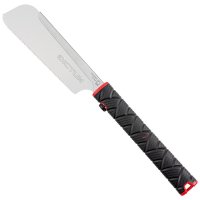
DICTUM Dozuki Super Hard Compact 180, Power Grip
incl. VAT plus shipping costs
Article No. 712795

DICTUM Dozuki Tenon X 240, Crosscut, Wave Grip
incl. VAT plus shipping costs
Article No. 712423

DICTUM Dozuki Universal Extra-fine 240, Traditional, Standard...
incl. VAT plus shipping costs
Article No. 712995

DICTUM Dozuki Universal, Katana Black Edition
incl. VAT plus shipping costs
Article No. 712155

DICTUM Dozuki Universal Compact 180
incl. VAT plus shipping costs
Article No. 712848
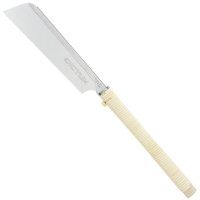
DICTUM Dozuki Universal 240, Traditional Grip
incl. VAT plus shipping costs
Article No. 712808
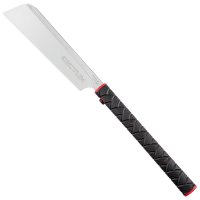
DICTUM Dozuki Universal 240, Power Grip
incl. VAT plus shipping costs
Article No. 712830

DICTUM Dozuki Universal 240, Wave Grip
incl. VAT plus shipping costs
Article No. 712420
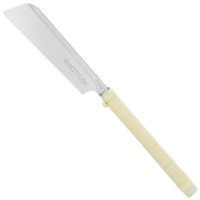
DICTUM Dozuki Universal Extra-Fine 240, Traditional Grip
incl. VAT plus shipping costs
Article No. 712994

DICTUM Dozuki Universal Extra-Fine 240, Wave Grip
incl. VAT plus shipping costs
Article No. 712421

DICTUM Dozuki Super Hard 240, Traditional Grip
incl. VAT plus shipping costs
Article No. 712809
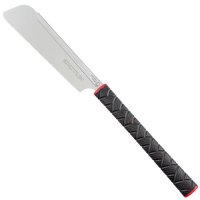
DICTUM Dozuki Super Hard 240, Power Grip
incl. VAT plus shipping costs
Article No. 712413
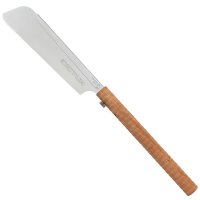
DICTUM Dozuki Super Hard 240, Wave Grip
incl. VAT plus shipping costs
Article No. 712424
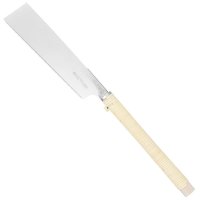
DICTUM Kataba 255, Crosscut, Traditional Grip
incl. VAT plus shipping costs
Article No. 712391
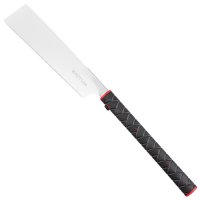
DICTUM Kataba 255, Crosscut, Power Grip
incl. VAT plus shipping costs
Article No. 712392

DICTUM Kataba 255, Crosscut, Wave Grip
incl. VAT plus shipping costs
Article No. 712427
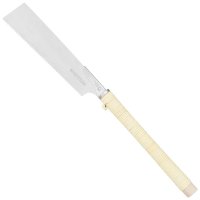
DICTUM Kataba 240, Rip Cut, Traditional Grip
incl. VAT plus shipping costs
Article No. 712394

DICTUM Kataba 240, Rip Cut, Power Grip
incl. VAT plus shipping costs
Article No. 712395

DICTUM Kataba 240, Rip Cut, Wave Grip
incl. VAT plus shipping costs
Article No. 712426
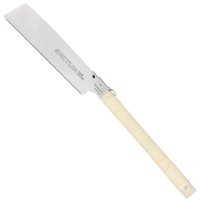
DICTUM Kataba Fine 250, Traditional Grip
incl. VAT plus shipping costs
Article No. 712397
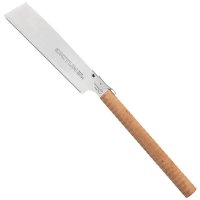
DICTUM Kataba Fine 250, Wave Grip
incl. VAT plus shipping costs
Article No. 712431
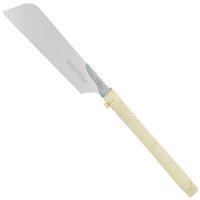
DICTUM Kataba Super Hard 240, Traditional Grip
incl. VAT plus shipping costs
Article No. 712204

DICTUM Kataba Super Hard 240, Power Grip
incl. VAT plus shipping costs
Article No. 712412

DICTUM Kataba Super Hard 240, Wave Grip
incl. VAT plus shipping costs
Article No. 712428
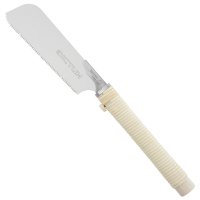
DICTUM Kataba Super Hard Compact 180, Traditional Grip
incl. VAT plus shipping costs
Article No. 712113

DICTUM Kataba Super Hard Compact 180, Power Grip
incl. VAT plus shipping costs
Article No. 712845

DICTUM Ryoba 240, Wave Grip
incl. VAT plus shipping costs
Article No. 712434
By selecting the settings and clicking on "Save settings", you give us your consent for us to use the selected cookies and technologies and the associated data processing in accordance with Art. 6 (1) (1) (a) of the GDPR. When cookies and similar technologies are used, data may also be processed in countries that are not part of the European Economic Area. You can find more information in our Data Privacy Policy.
Purpose:Marker that the visitor has clicked the back button and the display tab restore must be performed.
Provider: dictum.com
Type: Local/session storage
Purpose: Display of the visitor-specific promotion codes. Marker that the modal box should remain closed.
Provider: dictum.com
Type: Local/session storage
Purpose: Provision of the conversion factors for the currency converter.
Provider: dictum.com
Type: Local/session storage
Purpose: Storage of the currently selected currency in the currency converter.
Provider: dictum.com
Type: Local/session storage
Purpose: Provision of the glossary entries.
Provider: dictum.com
Type: Local/session storage
Purpose: Marker for the display tab restore when clicking the back button.
Provider: dictum.com
Type: Local/session storage
Purpose: Marker whether a cleanup of the Local Storage has taken place.
Provider: dictum.com
Type: Local/session storage
Purpose: Marker for the display tab restore when clicking the back button.
Provider: dictum.com
Type: Local/session storage
Purpose: Unique shop-internal user ID, which is required to provide essential shop functions such as shopping cart and login.
Provider: dictum.com
Type: HTML
Expiry: Session
Purpose: Technically necessary function for page redirection in the event of page loading errors.
Provider: dictum.com
Type: Local/session storage
Purpose: Ensures visitor browsing security by preventing cross-site request forgery.
Provider: dictum.com
Type: HTML
Expiry: Session
Purpose: Storage of the visitor setting whether cookies are generally allowed.
Provider: dictum.com
Type: HTML
Expiry: 180 days
Purpose: Storage of the number of elements in the shopping cart.
Provider: dictum.com
Type: Local/session storage
Purpose: Storage of the visitor setting whether cookies are generally prohibited.
Provider: dictum.com
Type: HTML
Expiry: 180 days
Purpose: Storage of the visitor settings in the Cookie Consent Manager.
Provider: dictum.com
Type: HTML
Expiry: 180 days
Purpose: Is set when a shop page with a corresponding parameter in the URL is requested and serves to provide corresponding price information.
Provider: dictum.com
Type: HTML
Expiry: Session
Purpose: Storage of the articles contained in the user's wish list in order to display the wish list buttons as active.
Provider: dictum.com
Type: Local/session storage
Purpose: Storage of the user setting for displaying the gross or net price.
Provider: dictum.com
Type: HTML
Expiry: 365 days
Purpose: Marker whether the gross/net price selection has already been displayed.
Provider: dictum.com
Type: Local/session storage
Purpose: Storage of a hash value of the elements sent to the browser via HTTP2 push.
Provider: dictum.com
Type: HTML
Expiry: 30 days
Purpose: Storage of the visitor setting, how many articles should be displayed per listing page.
Provider: dictum.com
Type: HTML
Expiry: Session
Purpose: Marker whether the cookie permission should be hidden for a specific shop language.
Provider: dictum.com
Type: Local/session storage
Purpose: Functional test whether local/session storage entries can be written. Entry is automatically deleted immediately after creation.
Provider: dictum.com
Type: Local/session storage
Purpose: Necessary cookie for controlling the cache handling.
Provider: dictum.com
Type: HTML
Expiry: Session
Purpose: Storage of the identification number of the shop language requested by the visitor.
Provider: dictum.com
Type: HTML
Expiry: Session
Purpose: Function test for cookie settings. This cookie is automatically deleted after creation.
Provider: dictum.com
Type: HTML
Expiry: Session
Purpose: Marker for the preferred or default video resolution.
Provider: dictum.com
Type: Local/session storage
Purpose: Marker for the assignment of customer-specific prices after login.
Provider: dictum.com
Type: HTML
Expiry: Session
Purpose: Is set when a shop page is called up with a corresponding partner parameter in the URL and is used to operate the partner program.
Provider: dictum.com
Type: HTML
Expiry: Session
Purpose: Unique shop-internal user ID, which is required to provide the wish list function.
Provider: dictum.com
Type: HTML
Expiry: 360 days
_gid
Purpose: Registers a unique ID that is used to generate statistical data on how the visitor uses the website.
Provider: .dictum.com
Type: HTML
Expiry: 1 day
_ga
Purpose: Registers a unique ID that is used to generate statistical data on how the visitor uses the website.
Provider: .dictum.com
Type: HTML
Expiry: 730 days
_gat / _dc_gtm_
Purpose: Serves to limit the query rate to Google Analytics.
Provider: .dictum.com
Type: HTML
Expiry: 1 day
Ga-disable-
Purpose: Opt out of Google Analytics tracking.
Provider: dictum.com
Type: HTML
Expiry: SESSION
Purpose: Tracking of visitor clicks on shop-internal recommendation banners.
Provider: dictum.com
Type: Local/session storage
Dmc- 12
Purpose: Setting pixels to store user behaviour (viewed products, navigation in the shop; products in the shopping cart) for the purpose of retargeting.
Provider: pix. hyj.mobi
Type: HTML
Expiration: 2 years
Dmc- 12-r
Purpose:Storage of all campaign IDs of shops the user has visited.
Type: HTML
Expiration: 2 years
Purpose: Stores with which end device the user has called up the shop. This information is used for statistical purposes and for the optimised provision of shop functions.
Provider: dictum.com
Type: HTML
Expiry: Session
Purpose: Controls whether personalized advertising is displayed with GoogleAds or whether user behavior is measured or only transmitted anonymously and aggregated.
Provider: dictum.com
Type: HTML
Procedure: 180 Days

